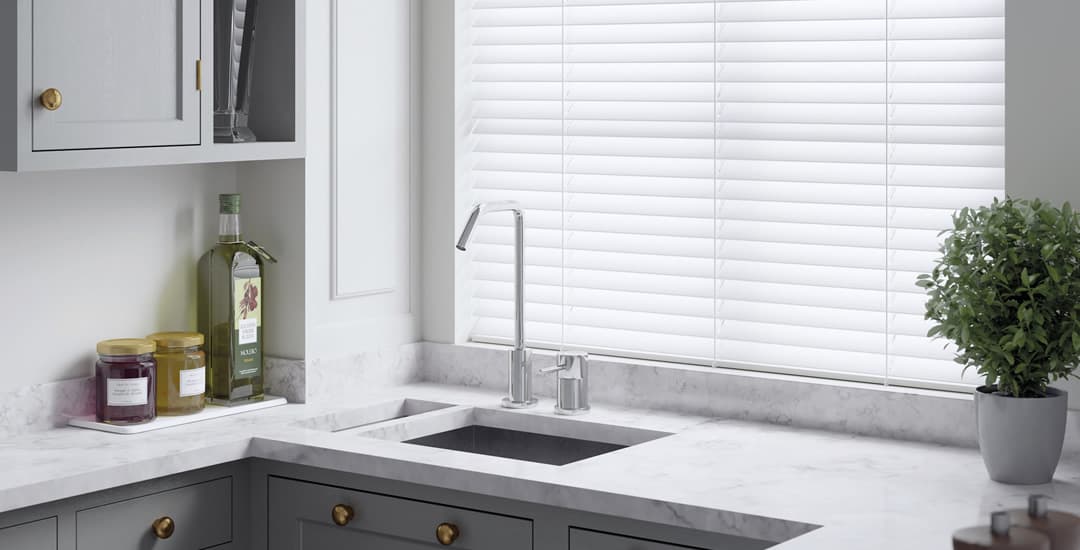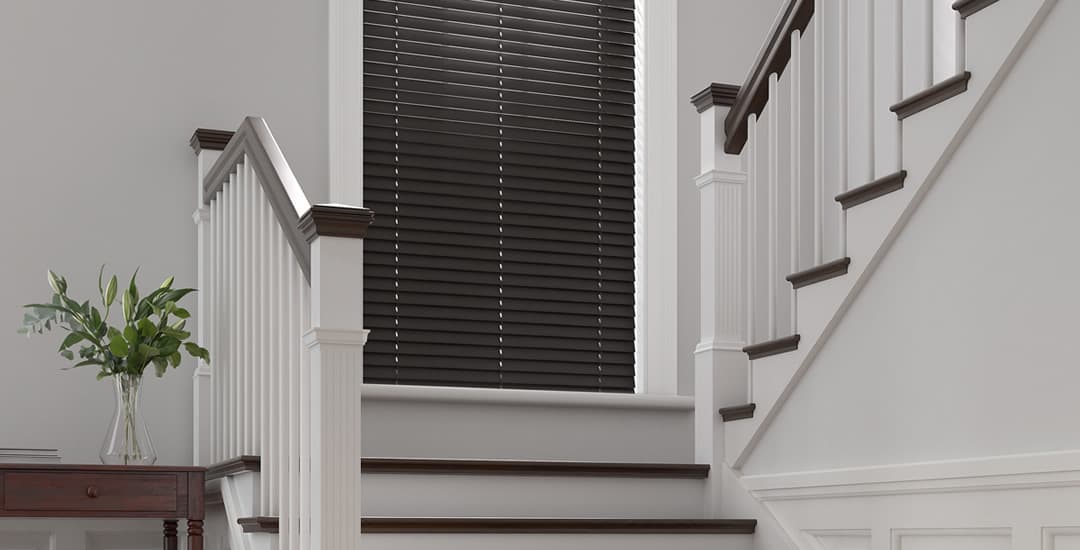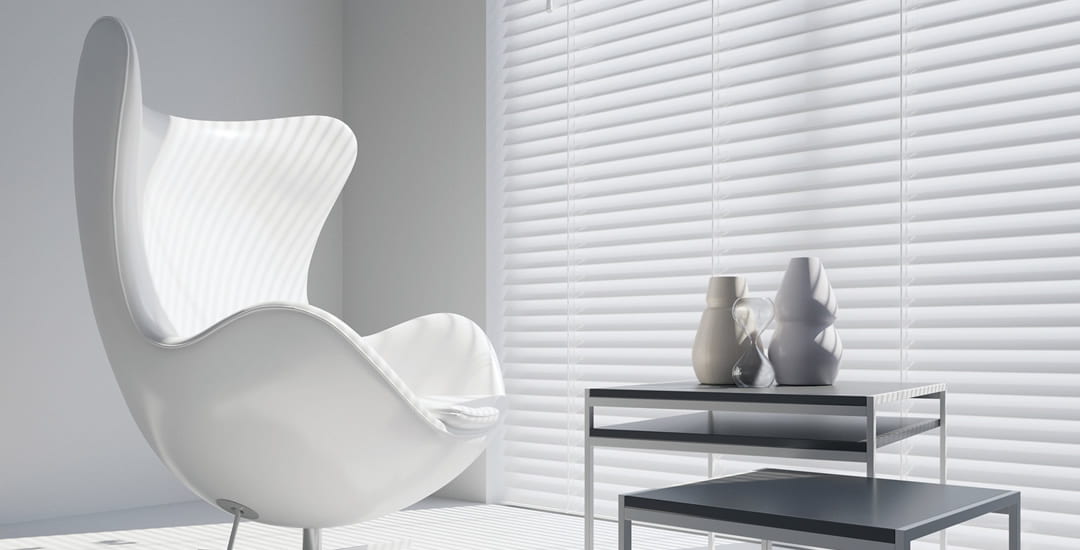
Faux wood blinds are actually heavier than real wood blinds; around 20% heavier, in fact. This comes as something of a surprise to some people who assume that faux wood blinds would be lighter, as they’re made of rigid PVC (a type of plastic) but in fact, this is actually a very dense, thick material.
This blog post will tell you which is heavier out of real wood blinds and faux wood blinds and why it matters anyway, as well as explaining why the weight of a blind might be of interest (or concern) at all.
Which is heavier: real wood or faux wood blinds?

Faux wood blinds are like-for-like heavier than real wood blinds, although there may be a level of variance across different manufacturers.
A good quality blind, whether it’s made of real wood or faux wood, needs to be a certain thickness and so, weight in order to meet the relevant benchmark of performance and quality; that said, there’s no benefit in making either type of blind thicker than is needed to ensure its performance and longevity, as this would also make it heavier than it needs to be too, which can be a problem as well as a waste of resources.
Are faux wood blinds lighter than real wood blinds from different product ranges?

Theoretically, a manufacturer might have a real wood blind that’s heavier than the same sized faux wood blind from someone else if the other party’s faux wood blind was particularly flimsy; but even so, this is unlikely.
Creating a blind that will hold its shape and not bow or sag over time requires a certain weight of material and thickness of slats, for both real wood and faux-wood blinds; and put simply, because faux-wood (PVC) is a heavier material than real wood, a blind made to the same quality and performance specification will be heavier in faux wood than real wood.
Are wood blinds or faux wood blinds heavier in different slat widths and sizes?

When you choose made-to-measure wooden blinds or faux-wood blinds, you will also be able to choose from a range of options for the width of the slats on the blind, and the most common options are 50mm, 35mm, and 25mm slats respectively.
A blind made up of 25mm slats will require more individual slats than a blind made up of 50mm slats; but does that equate to double the slats of half the weight and so mean that regardless of slat width, the blind will weigh the same, or not? Put simply, yes.
So, are wooden blinds or faux wood blinds heavier if you factor in different slat widths and sizes? Faux wood blinds are still heavier like for like for the same window, regardless of the width of slats you might choose for either a real wood or faux wood blind.
Oh, one other thing; the type of real wood used (or even its finish or treatment) can result in a minor difference in weight between one real wood blind to another; for instance, our fine grain real wood blinds are a shade lighter than most of our other real wood blinds, which in turn makes them a little lighter again than our faux wood blinds.
Why does the weight of a wood or faux-wood blind matter anyway?

I do fully appreciate that unless there’s a point to knowing which is heavier (real wood or faux wood blinds) then this blog post is likely to be of interest to exactly nobody outside of the blinds trade, and not necessarily everyone within it either.
So, why might you need to know if a faux wood blind weighs more than a real wood blind of the same size? Well, if you’re dealing with small or average-sized blinds, it doesn’t really matter at all, and the difference in weight is likely to be both irrelevant and virtually indiscernible to the end user.
However, for larger blinds, there is a maximum weight that beyond which, a blind can’t realistically be fabricated, shipped, hung, and operated safely; if at all.
The fabrication and shipping side of things is probably self-evident when it comes to massive goods, but the weight issue and how this translates to the blinds buyer at home is not so obvious unless you’re in the trade.
Basically, beyond a certain weight, one or two people can’t realistically be expected to physically handle and hang a blind safely and with relative ease, and it might even prove overly heavy for its brackets, fixings, or even the wall of the house.
Even if these points could be worked around, blinds beyond a certain material weight are hard to operate because they need quite some physical strength applied to the control cord or wand to raise and lower them, and fighting with one’s own fixtures and fittings twice a day and maybe not even winning every time is rarely high on anybody’s list of interiors must-haves.
Because real wood blinds are around 20% lighter than faux wood blinds in terms of their material weight, this also means that they can be made somewhat larger than a faux wood blind and still be safe and straightforward to hang and operate.
When it comes to faux wood blinds, the largest dimensions we offer are blinds of 2600mm/260cm/2.6 metres wide by 3000mm/300cm/3 metres long; larger than this and they’d become overly hefty to move and hang, and vitally, they will begin to become difficult to raise for some people.
As you can probably visualise (feel free to get a tape measure out, I’ll wait) 2.6 metres by 3 metres is in fact actually a pretty big blind anyway; and so for the vast majority of homes, even those with biggish windows, you aren’t going to find yourself topping out and being restricted to lighter options.
For comparison though, the maximum size we can make real wood blinds in is 2800mm/280cm/2.8 metres wide by 3500mm/350cm/3.5 metres long. That’s 20cm wider than the highest possible width we can do a faux-wood blind in, and a good 50cm longer too.




